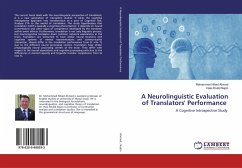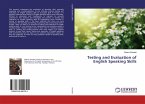The current book deals with the neurolinguistic perspective of translation; it is a new generation of translation studies. It takes the cognitive introspective approach into consideration as a part of Cognitive Task Analysis CTA to the model of translation. The study hypothesizes that translation motif is basically a cognitive phenomenon; it depends on neural transmissions and other types of competence developed by the translator within event effects. Furthermore, translation is not only linguistic process, but neurocognitive templates share common network associations in the brain. Translators are subsumed to have similar neural locations and cognitive systems of mental representations and communicative interaction, almost differ in the translation performance from SL into TL due to the different neural processing centers. Translators have similar physiologically neural processing centers of the brain. They differ with respect to the neural associations and cognitive processing units due to the differences in mental capacity and linguistic transfer competence from SL into TL.
Hinweis: Dieser Artikel kann nur an eine deutsche Lieferadresse ausgeliefert werden.
Hinweis: Dieser Artikel kann nur an eine deutsche Lieferadresse ausgeliefert werden.








